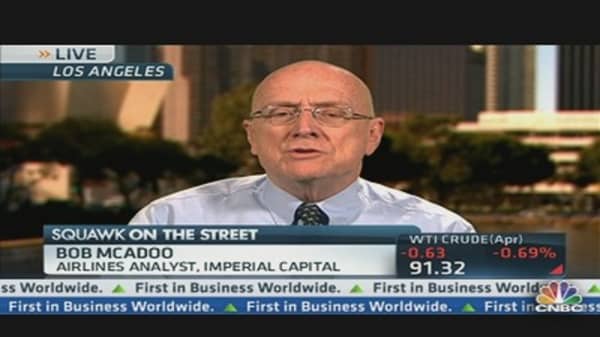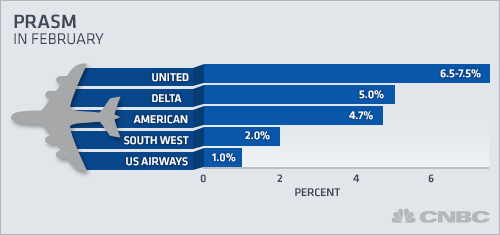These are strange new times for airlines in the United States. After years of struggling to break-even, carriers are not only in the black, but could post profitable first quarters.
Why is that a big deal? The first quarter is typically the slowest in the industry with few major travel holidays and weather that can often sock the bottom line with costly cancellations.
Fewer Seats and More Fees
The airline business is finally a profitable one because the carriers have brought down their capacity. They've done it by stripping out flights and replacing larger planes on many routes with smaller regional jets.
As a result, planes are more crowded and the airlines have been able to maintain their pricing power. "We are managing things differently. Oil is down and people are not worrying around about market share," said Bob McAdoo airlines analyst with Imperial Capital.
In February passenger revenue per available seat mile (PRASM) was up for America's five largest airlines.






